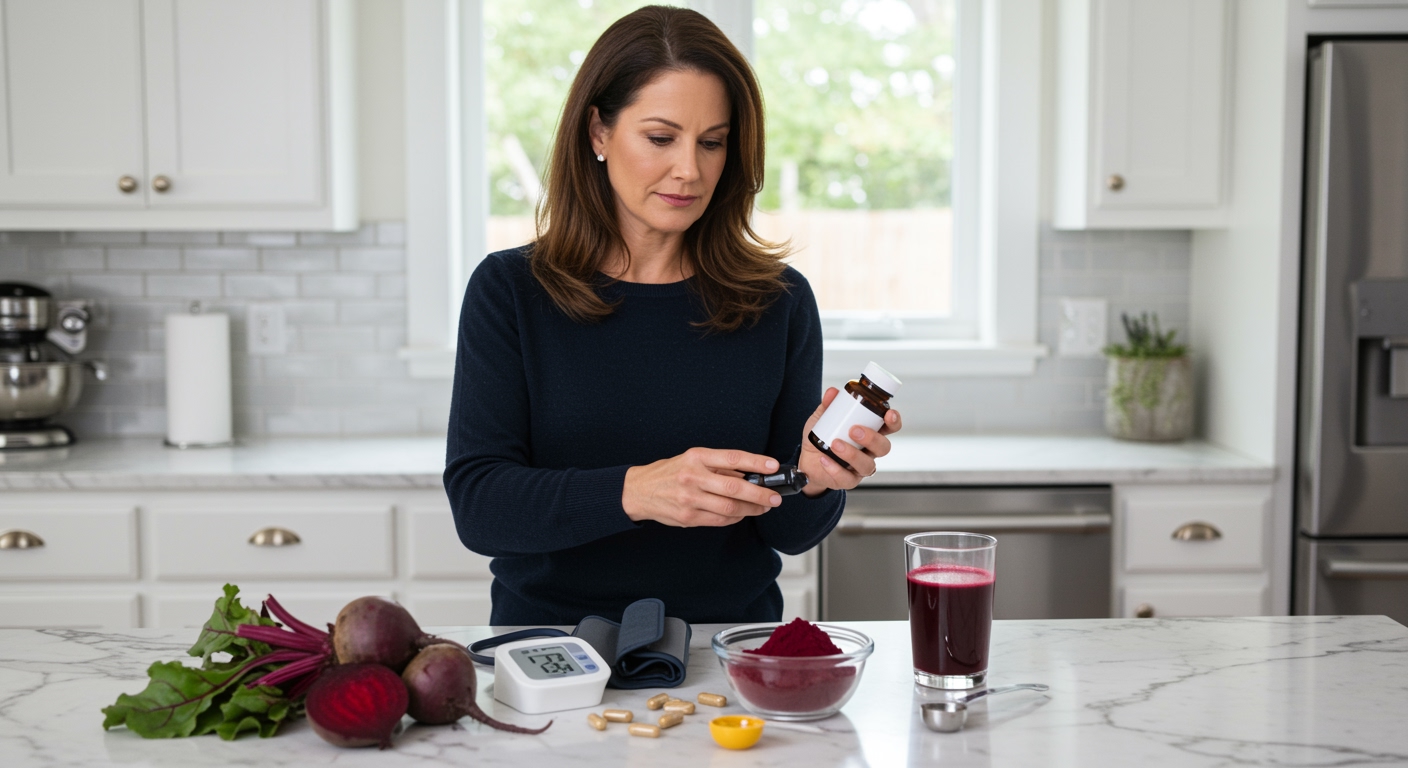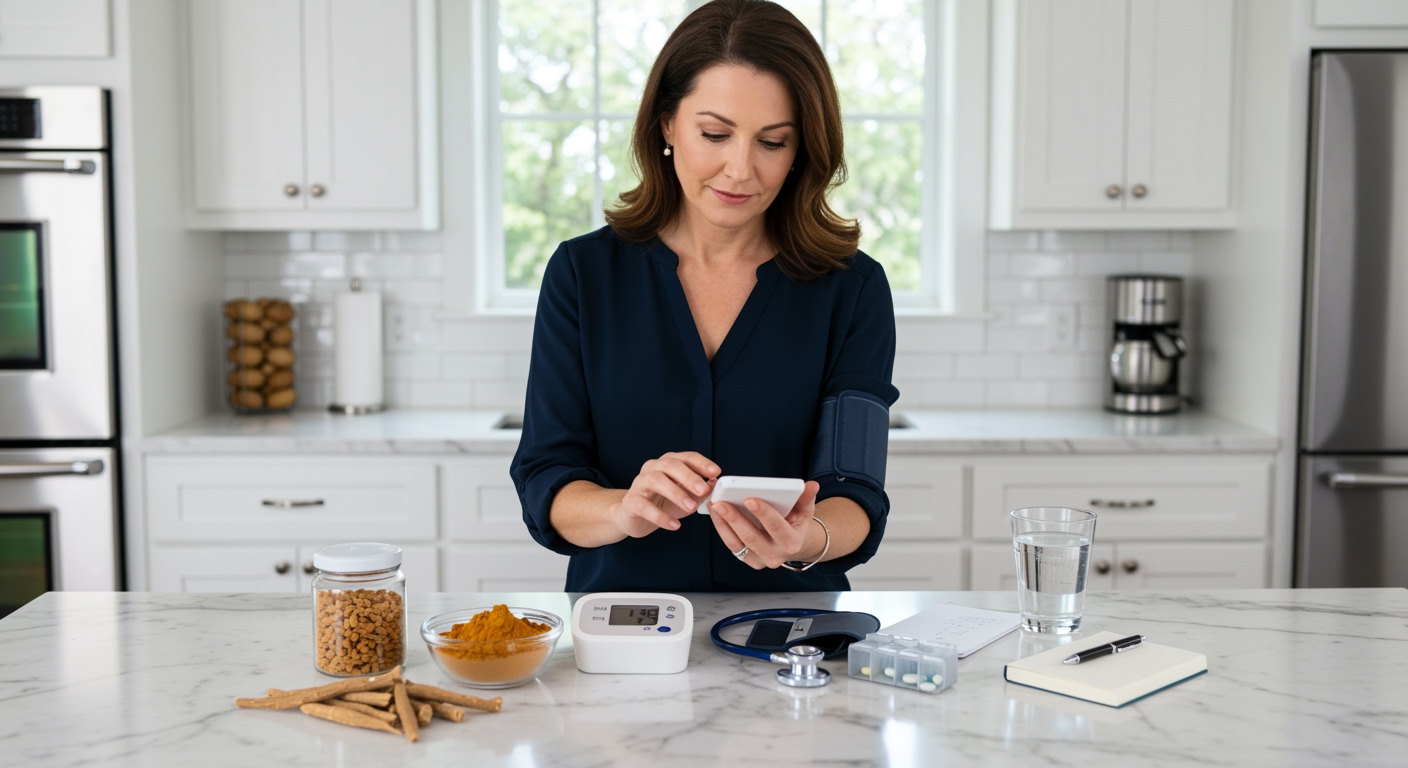✪ Key Takeaway: Broccoli can help lower blood pressure through potassium, fiber, and sulforaphane compounds that support heart health.
Introduction
Your doctor just told you that your blood pressure numbers are creeping up, and now you are wondering if simple dietary changes can make a real difference.
You might be asking this question because you want to avoid medications or simply prefer natural approaches to managing your health.
Hi, I am Abdur, your nutrition coach, and today I am going to explain exactly how broccoli can help manage your blood pressure levels and what the science really says about this green powerhouse.
What Makes Broccoli Special For Blood Pressure?
Broccoli contains a unique combination of nutrients that work together to support healthy blood pressure levels.
The most important player is potassium, which helps your kidneys remove excess sodium from your body.
When sodium levels drop, your blood vessels can relax, and your blood pressure naturally decreases.
One cup of cooked broccoli provides about 460 milligrams of potassium, which is roughly 10% of your daily needs.
Broccoli also contains sulforaphane, a sulfur compound that forms when you chew or chop the vegetable.
This compound helps improve the function of your blood vessel walls, making them more flexible and responsive to changes in blood flow.
Research shows that people who eat more cruciferous vegetables like broccoli tend to have lower blood pressure readings compared to those who eat fewer of these vegetables.
✪ Fact: Broccoli belongs to the cruciferous vegetable family, which includes cabbage, kale, and Brussels sprouts.
How Does The Fiber In Broccoli Help?
The fiber in broccoli plays a crucial role in blood pressure management through multiple pathways.
Soluble fiber helps reduce cholesterol levels, which can improve the health of your arteries and reduce pressure on your cardiovascular system.
When your arteries are cleaner and more flexible, your heart does not have to work as hard to pump blood throughout your body.
Fiber also helps regulate blood sugar levels, preventing the spikes and crashes that can stress your cardiovascular system.
One cup of cooked broccoli contains about 5 grams of fiber, which is 20% of the daily recommended amount for most adults.
The fiber in broccoli also feeds beneficial bacteria in your gut, and these bacteria produce short-chain fatty acids that have anti-inflammatory effects throughout your body.
Chronic inflammation is linked to high blood pressure, so reducing inflammation through diet can help support healthy blood pressure levels.
✪ Pro Tip: Steam broccoli for 3-4 minutes to preserve maximum fiber content and nutrients.
What Does Recent Research Say About Broccoli And Blood Pressure?
Recent studies have provided compelling evidence that cruciferous vegetables like broccoli can significantly impact blood pressure levels.
A 2024 study published in medical journals found that people who ate four daily servings of cruciferous vegetables showed measurable reductions in blood pressure compared to those eating root vegetables.
The research followed participants for several weeks and measured both systolic and diastolic blood pressure readings.
Those eating more broccoli and similar vegetables experienced an average drop of 2.5 mmHg in systolic pressure, which may seem small but is clinically significant.
Even a 2 mmHg reduction in blood pressure can lower your risk of heart disease by 6% and stroke risk by 8%.
The study also found that the benefits were most pronounced in people who consistently ate these vegetables over time rather than occasionally.
This suggests that making broccoli a regular part of your diet is more effective than eating it sporadically.
✪ Note: Four servings of cruciferous vegetables equals about 2 cups of raw or 1 cup of cooked vegetables daily.
How Should You Prepare Broccoli For Maximum Benefits?
The way you prepare broccoli can significantly affect its blood pressure benefits.
Steaming is the best cooking method because it preserves the most nutrients while making the vegetable easier to digest.
Boiling broccoli can cause up to 50% of the water-soluble vitamins and minerals to leach into the cooking water, which you typically discard.
Raw broccoli contains the highest levels of sulforaphane, but some people find it difficult to digest in large quantities.
Lightly steaming for 3-4 minutes creates the perfect balance between nutrient retention and digestibility.
Adding a small amount of healthy fat like olive oil can help your body absorb the fat-soluble vitamins in broccoli more effectively.
Avoid overcooking broccoli until it becomes mushy, as this destroys many of the beneficial compounds that support cardiovascular health.
✪ Pro Tip: Chop broccoli and let it sit for 10 minutes before cooking to maximize sulforaphane formation.
How Much Broccoli Should You Eat For Blood Pressure Benefits?
The research suggests that eating one cup of cooked broccoli daily can provide meaningful blood pressure benefits.
This amount provides approximately 460 mg of potassium, 5 grams of fiber, and significant amounts of vitamin C and folate.
You can spread this amount throughout the day by adding broccoli to different meals rather than eating it all at once.
For example, you could add half a cup to your morning omelet and half a cup to your evening dinner.
Some people benefit from eating even more cruciferous vegetables, up to 2 cups daily, especially if they have elevated blood pressure readings.
However, if you are taking blood-thinning medications, you should consult your doctor before significantly increasing your intake of green vegetables.
The key is consistency rather than quantity, so focus on making broccoli a regular part of your weekly meal planning.
✪ Fact: One cup of cooked broccoli contains only 55 calories but provides 220% of your daily vitamin C needs.
The Bottom Line
Broccoli can indeed help manage blood pressure levels through its unique combination of potassium, fiber, and sulforaphane compounds that support cardiovascular health.
Small dietary changes like adding one cup of broccoli daily can create meaningful improvements in your health over time.
I would love to hear about your experience with incorporating more vegetables into your diet or any questions you might have about natural approaches to blood pressure management in the comments below.
References
At NutritionCrown, we use quality and credible sources to ensure our content is accurate and trustworthy. Below are the sources referenced in creating this article:





